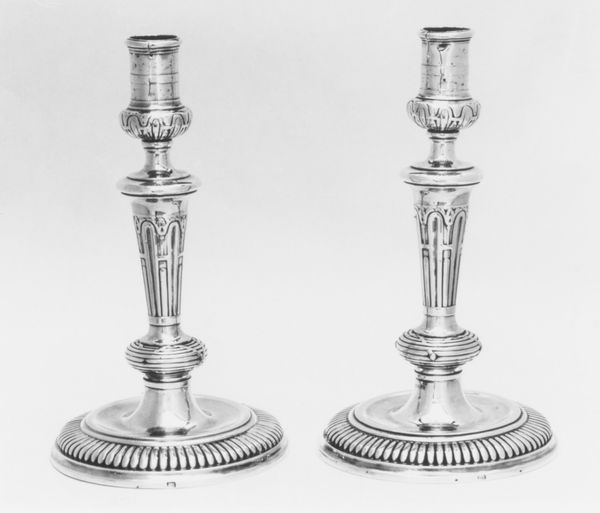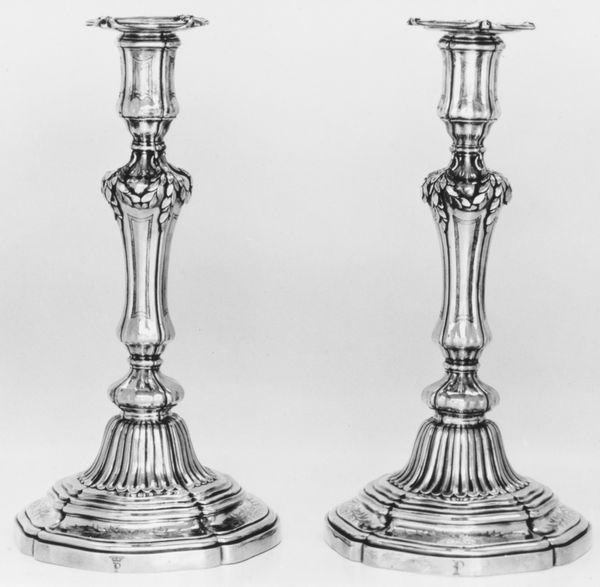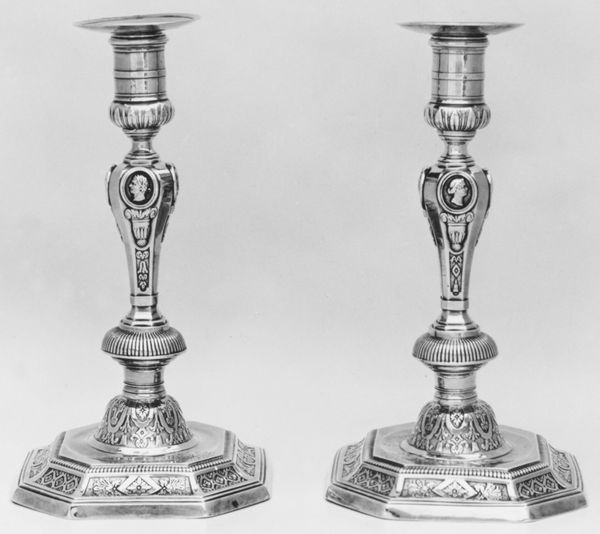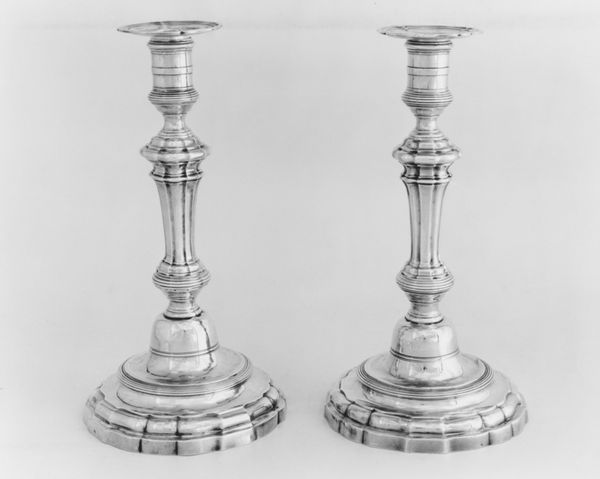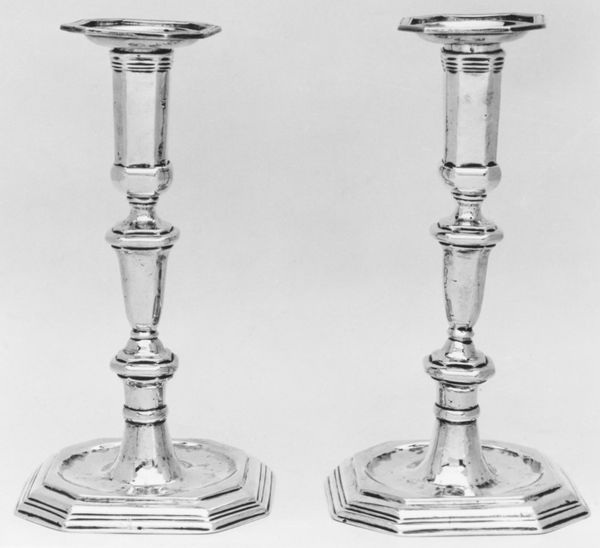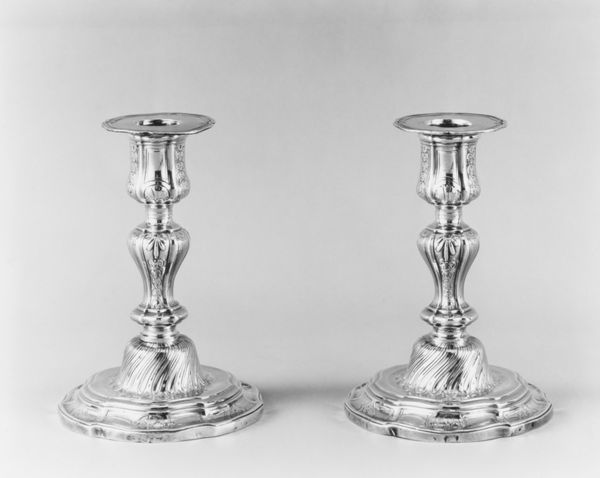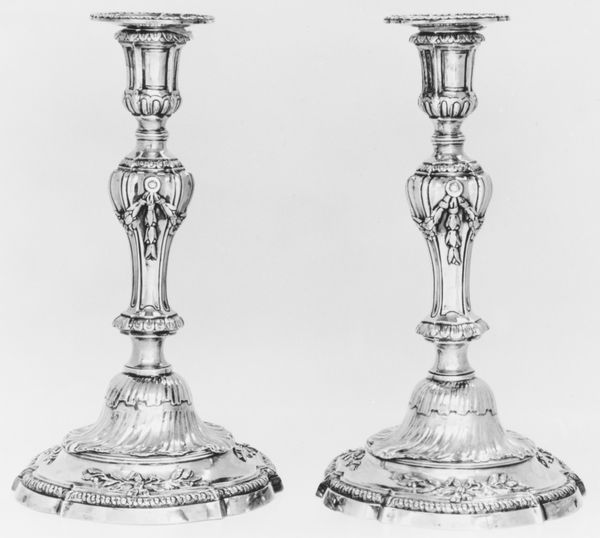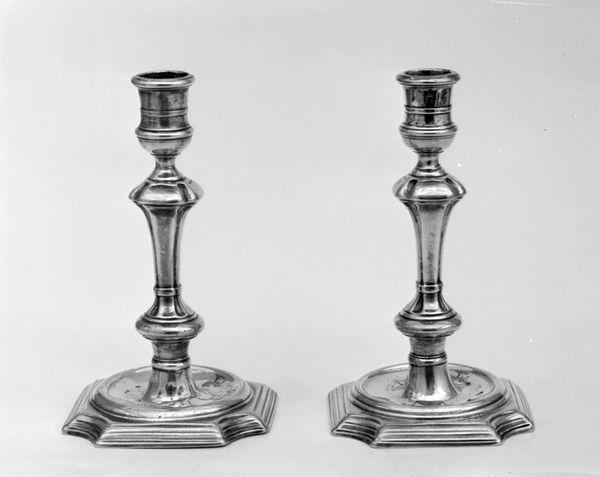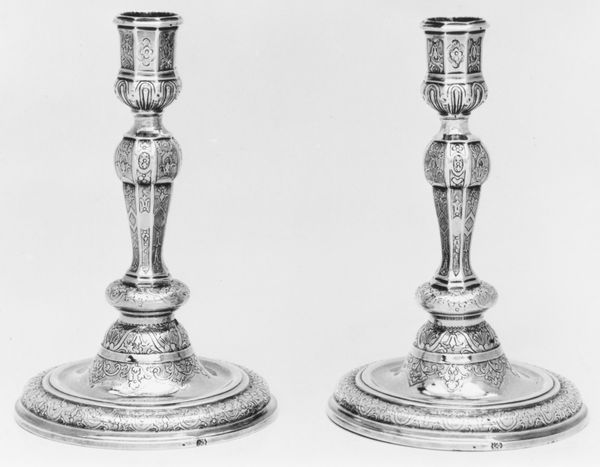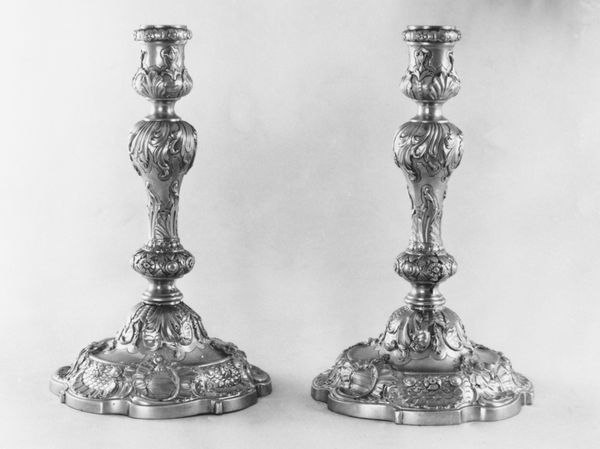
silver, metal, sculpture
#
silver
#
baroque
#
metal
#
sculpture
#
sculpture
#
decorative-art
Dimensions: Overall (each): 10 5/8 × 5 9/16 in. (27 × 14.1 cm)
Copyright: Public Domain
Curator: Standing before us, we have a pair of Baroque silver candlesticks created by Jean Mauzé between 1734 and 1735. Editor: They strike me as extraordinarily rigid and proper. The reflective silver amplifies their symmetry to almost chilling effect. Curator: Considering their function, the form served the aspirations of elite social rituals of the time. Think of Versailles, and the projection of wealth and power. Candlesticks were status symbols, carefully positioned in specific settings to manipulate light and shadow, impacting how spaces were perceived and bodies were presented. Editor: I find it fascinating how something ostensibly so decorative is laden with implicit rules about performance. The rigid formality evokes a sense of performative power that reinforces social hierarchy. Curator: The decorative art style flourished through systems of patronage. These pieces reflect cultural values embedded within particular social frameworks. Baroque design became visual propaganda. It aimed to inspire and awe, but also, to assert authority. The candlesticks employ the very essence of absolutism in the glittering form of sculpture, made useful, beautiful and aspirational. Editor: There’s something about the faces near the top, they look Roman and somewhat severe. What about ideas of luxury and access surrounding materials like silver, then and now? Curator: The exclusivity of silver and the intricate detailing certainly restricted access to such items. Craftspeople such as Mauzé would be patronized to produce pieces like these, designed to amplify the persona and status of wealthy clientele. Silver as a medium holds its own story related to resource extraction, trade routes and colonial power. These are pieces enmeshed within global systems. Editor: Considering how they were positioned and perceived back then really casts them in a new light. It brings an important dimension of how design is intrinsically entangled within politics and power. Curator: Absolutely. Understanding these social histories deepens our appreciation for the agency embedded within seemingly inert objects. Editor: Indeed, thank you for illuminating how such an apparently conventional work reflects profound insights into that era’s societal ambitions and dynamics.
Comments
No comments
Be the first to comment and join the conversation on the ultimate creative platform.


